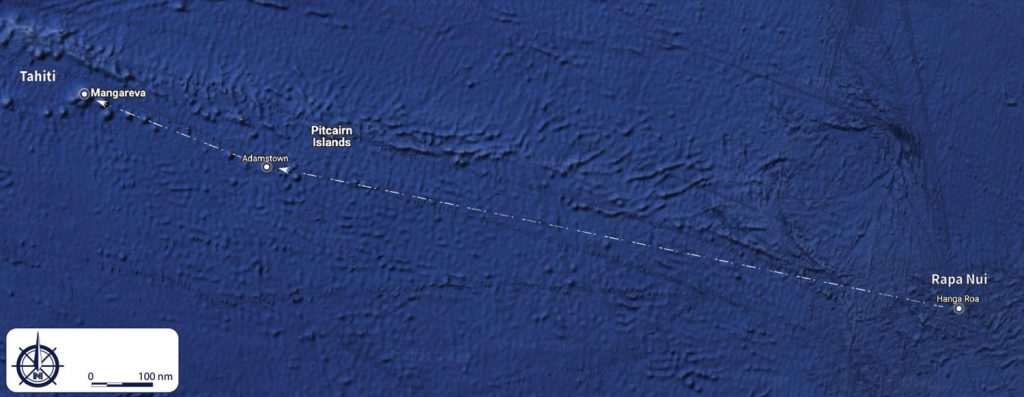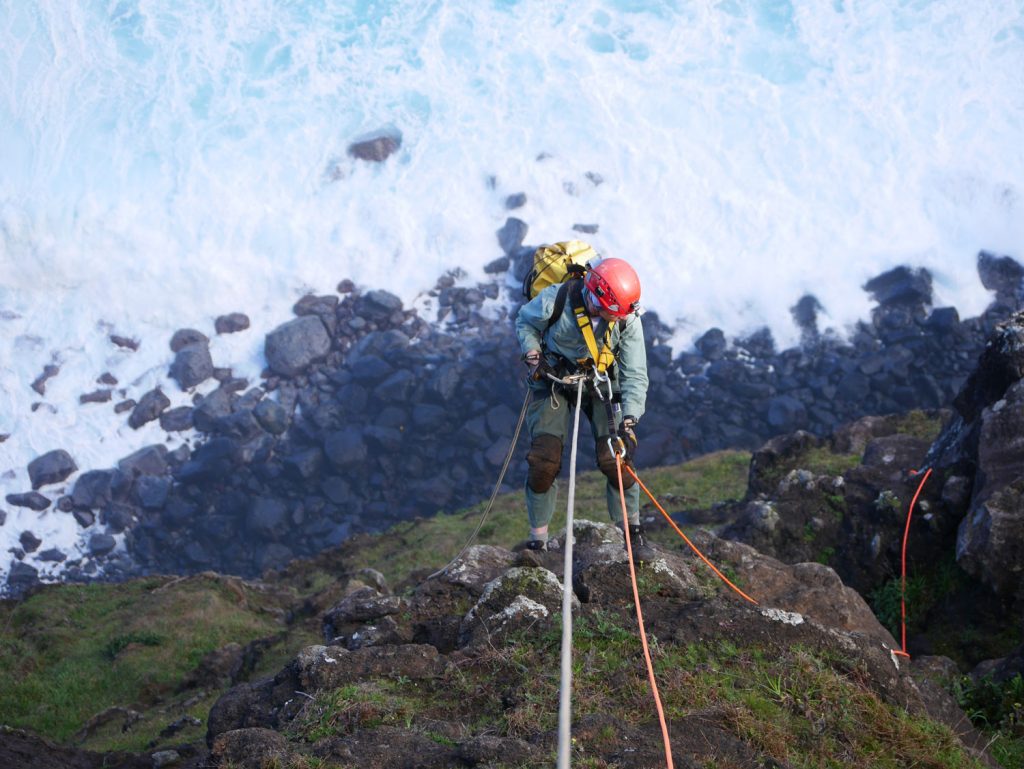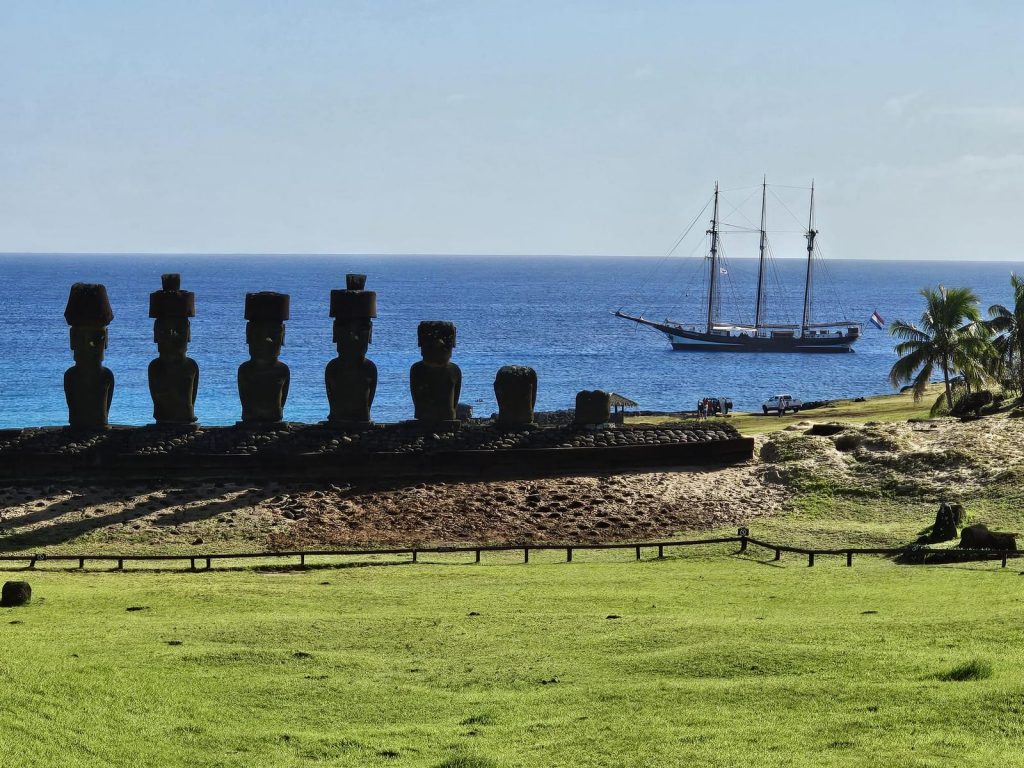This month, an NAU professor is retracing Charles Darwin’s famous multi-continent voyage in the name of science.
Jut Wynne, an assistant research professor in the Department of Biological Sciences, will spend the month of June aboard a 1917 tallship much like Darwin’s HMS Beagle, which set sail nearly 200 years ago. He’ll join one short leg of the global expedition, traveling across the Pacific Ocean from Rapa Nui, also known as Easter Island, to Mangareva, the easternmost island of French Polynesia.

Like others on the Darwin200 expedition, Wynne is on board to conduct the kind of ecological research the iconic English naturalist would have loved to read about: He’s setting out to test his own hypothesis as to whether ancient Polynesians accidentally transplanted insects to Rapa Nui and other parts of eastern Polynesia via canoe.
“When we go on a car camping trip, we want to take all of the creature comforts with us,” Wynne said. “Well, for the ancient Polynesians, those creature comforts were plants. They didn’t just bring plants for food; they also brought plants for medicinal purposes and for making nets and rope. So when they traveled by their large double-hulled voyaging canoe, they would take gourds with saplings, and they would introduce them to each island they went to as they moved across Polynesia. Through this process, they’d introduce not only new plants but also new bugs.”
Wynne believes at least three species of insects that are unique to eastern Polynesia were introduced via canoe thousands of years ago, and he wouldn’t be surprised to learn there are even more “canoe bugs.” To find out if he’s right, the biologist will travel to some of the most remote islands in eastern Polynesia. There, he will study coastal and cave habitats Darwin opined about in his writings to look for these unique species. Along the way, he’ll also monitor the Pacific waters for rafting terrestrial arthropods, aerial plankton and airborne spiders.

This isn’t Wynne’s first time visiting Rapa Nui. He’s traveled to the isolated island five other times to study cave-dwelling insects that exist nowhere else in the world—sometimes while rappelling down steep coastal cliff faces.
Wynne said he’s one of few biologists studying the insect diversity of eastern Polynesian islands—and the only scientist studying them by tall ship.
“More than half of Rapa Nui’s native species have not been observed since they were first described on the island,” Wynne said. “From what I can discern, the last entomological investigation of Mangareva was in the 1930s. And it appears the last entomological study on the Pitcairn Islands was in the early 1990s. I’ll be sampling cave and coastal habitats to search for potential ‘canoe bugs’ and other native species that may be new to science.”
Wynne’s work won’t just add new information to the scientific literature. It may also help identify which of these islands’ insect species are endangered and in need of support.
“While islands constitute about 7% of the Earth’s landmass, they support nearly 20% of the planet’s diversity,” Wynne said. “Equally as important, nearly 50% of the species identified as threatened or endangered by the International Union for Conservation of Nature are endemic to islands. Part of my work will involve collecting data to assess the IUCN Red List status for several of the endemic species that colleagues and I discovered on Rapa Nui in the early 2000s.”
The adventure-seeking scholar returns to Flagstaff in July, but not for long: in the fall, he’ll travel to Bhutan to study how tigers, leopards and other animals use caves.
Jill Kimball | NAU Communications
(928) 523-2282 | jill.kimball@nau.edu




